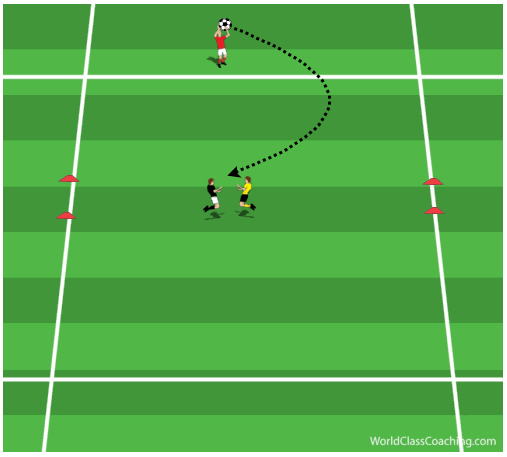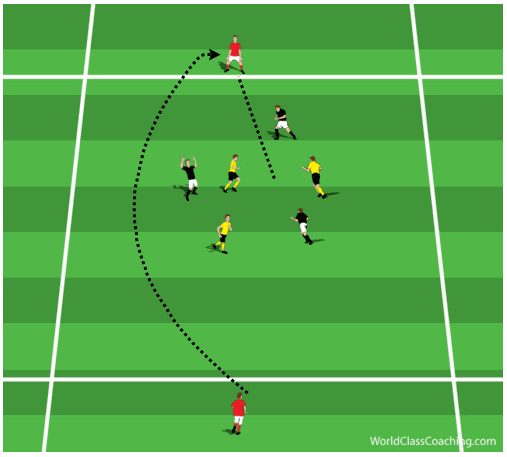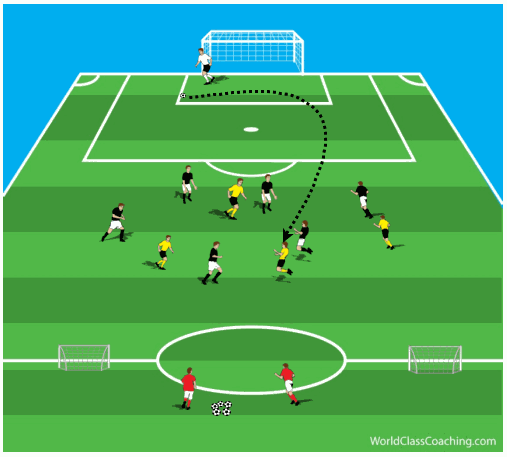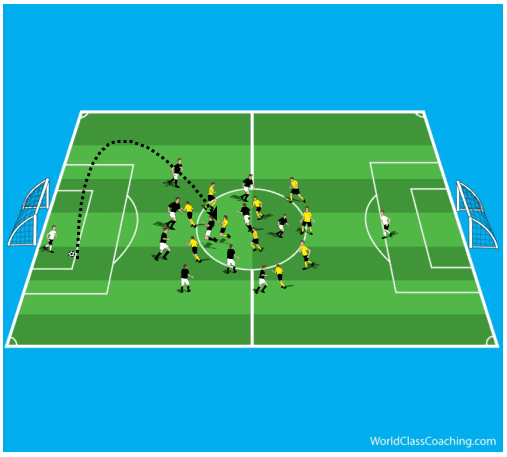By Eric Clermont -
During the past ten years and beyond, football has seen the rise and fall of Spain and the re-emergence of Germany as the global superpower on the world stage. The world of youth coaching will always attempt to replicate the ‘flavor of the month’s’ style and at this point in time, this revolves around building out from the back, attempting to keep possession at all costs, use combination play, mobility and technical quality to break the lines and score ‘the perfect goal’ with 55 passes from back to front without the opposition touching the ball. The developmental positives for youth players throughout the growing ages are also great, meaning that players can both gain success playing this way (given they are given time to develop in this way) and improve as football players.
While I am a major advocator of this school of thought and the perceived positives, I have also noticed the lack of defensive capability and ability of youth coaches to teach ‘the nasty side’ of the game. While I may seem unfair in my criticism, (and of course, there are exceptions to the rule) I urge you to watch a youth team who is comfortable in possession play against a direct team who looks to lump the ball forward. Many teams will struggle more against these types of team due to the shape played in when playing a possession game and the high line that is usually associated with it. As fellow football purists, I’m sure all of you have felt that sick to the stomach feeling of losing a game to a team that cannot and do not even attempt to string more than 3 passes together.
My answer to the problem is two-fold;
- We must teach players the visual cues of defending. In other words, players should learn (I believe as early as 11 or 12) when they can press as a team and when they should drop and get into a compact defensive shape.
- We must teach our players the technical, physical and tactical elements of winning both first and second balls effectively, in order to regain possession.
The following practice is meant for ages between 10-18 years old. Depending on ability level, the coach may choose to skip the first stage or even end at stage 3. Numbers can always be varied to match your own team formation, but the following practice is set up to teach a team playing in a 1-4-3-3 shape). This can be taught for teams playing 8-a-side (1-4-1-2) at the younger ages too.
Session Title
Coach the centre backs and three centre midfielders to win second balls and regain possession against a team playing a direct style of play (1-4-3-3 formation Vs opposition in 1-4-3-3) in the defensive-middle third.
Objectives of the Session
Teach players the physical and technical aspects of competing defensive headers and winning 2nd ball (GK, back four, two holding mids). Teach the team effective communication required between the back four and how covering defenders should react to aerial challenges (esp. GK, back four, two holding mids). Teach team to effectively win second ball by getting numbers around the ball, getting into good offensive shape during transition and teaching the correct decisions when gaining possession (the back four, GK, three center mids and 2 wide midfielders).
Part 1: Winning Individual Battles
Organization: 20 x 30 yards
- One server plays 4 balls in to the playing area. Players get one point for every header they play back to the server (they both compete).
- On the fifth ball into the area, both players compete to get the ball controlled and attempt to score at the goal opposite. 3 points for a goal.
Play for 2 mins, 1 min rest (dynamic stretches) and then switch the server.
Part II: Winning small group battles
Organization: 30 x 40 yds
- Two servers play on each side (1 per side) with a 3 v 3 in the playing area. Play starts with one server playing a long ball into the opposite side server, who plays a defensive header into the playing area and the game is live.
- When live, both teams work to win second ball, gain possession and to play from one target player to the other.
- If possession is lost, the opposition plays into the server to restart play or if ball goes out of bounds, ball restarts from a server. Active Recovery- dynamic stretches.
Organization: 50 x 60 yds
- Three target players play behind the mini goals, with a 6 v 6 + GK in the playing area.
- Play starts with the Coach playing to one of the target players. Defensive team (6 + GK) must change their position depending on delivery point. Target plays long into the field.
Both teams challenge for for 1st and 2nd ball. If the defensive team win possession, they play to the target goals. If the attacking team win possession, they play to the big goal.
[wpsharely id="1204"][/wpsharely]Organization
Full size field. 8 v 8/ 11 v 11 (depending on age group) Black team play in 1-4-3-3 and Yellow team play in 1-4-3-3. Full size field to 2 full size goals. 10 balls to ensure quick restarts and flow.
Coaching Points
Technique of defensive header should go up and out (away from danger). Tactical anticipation of where the ball will drop is key- get numbers around the ball. Physical presence and ability to compete under pressure.
Team shifts towards the side that the ball is being played (Compactness around the ball). Defenders who are not competing for the ball can drop, while 2 CM’s anticipate where the ball will drop (around Zone 14). Physical competition and anticipation necessary for the first and second ball. Use of body when winning second ball (between the ball and opposition player).
Communication- e.g. "Eric's ball!" to give team-mates information that they can drop/step. Defensive to offensive shape during transition. Ability to anticipate second ball.
By Eric Clermont - NSCAA Premier Diploma, USSF A License Candidate






